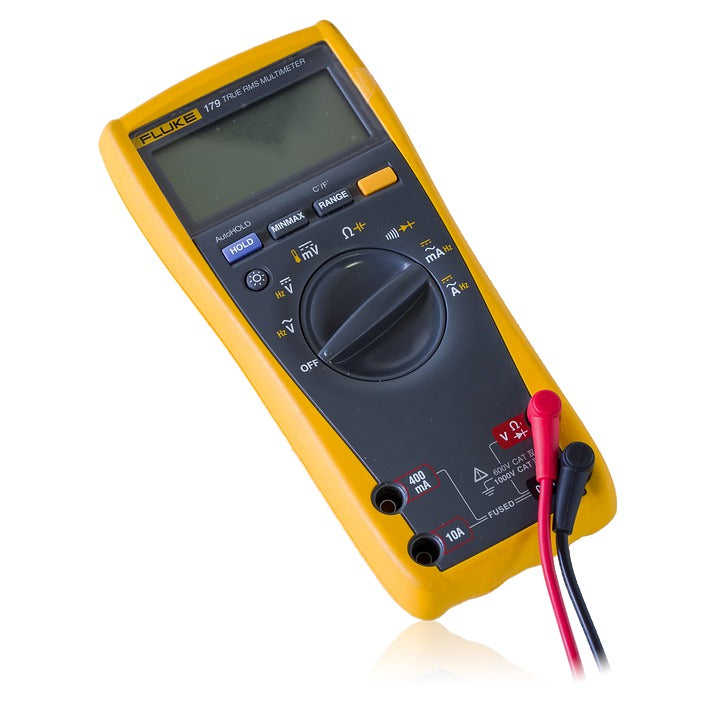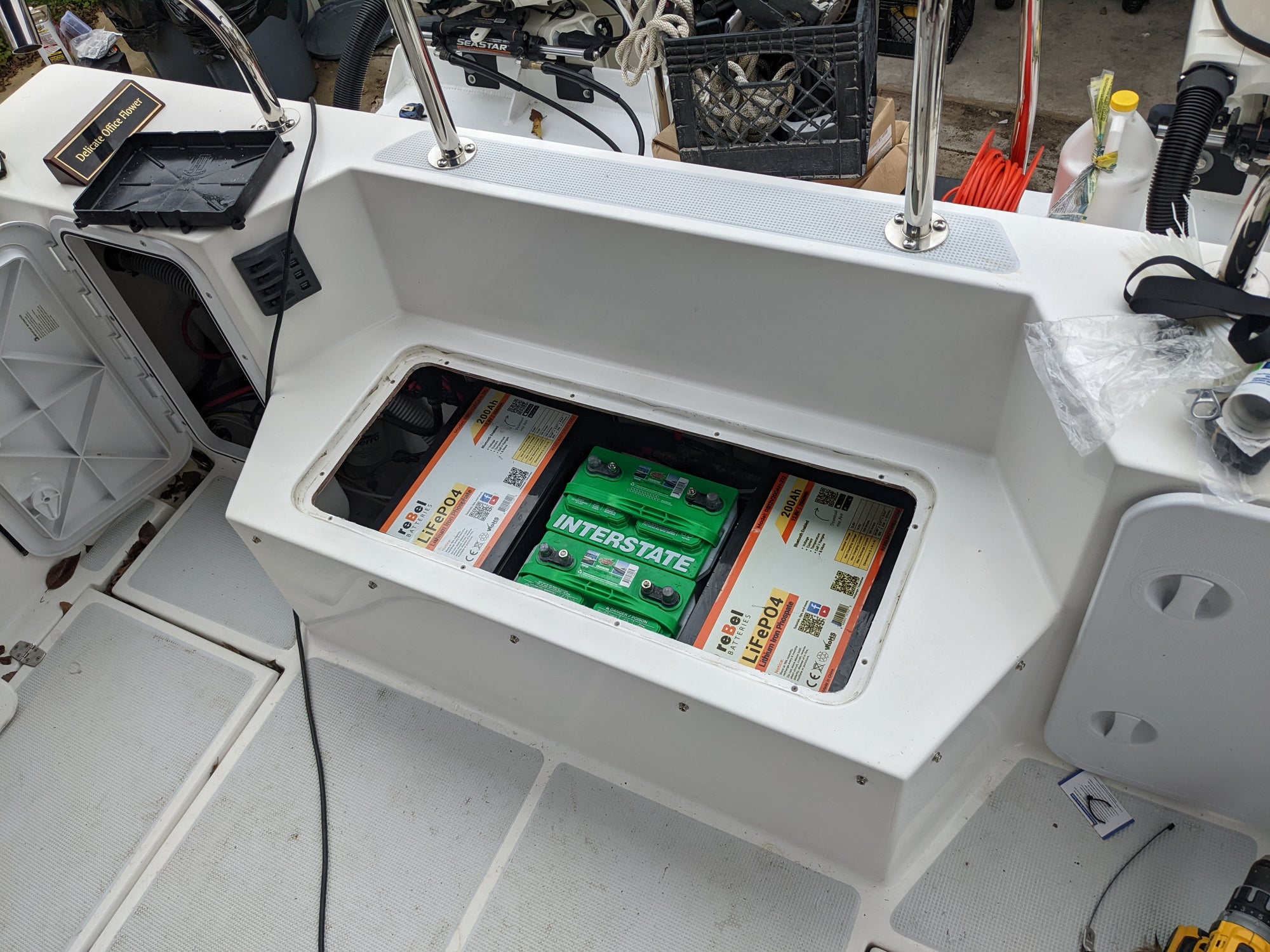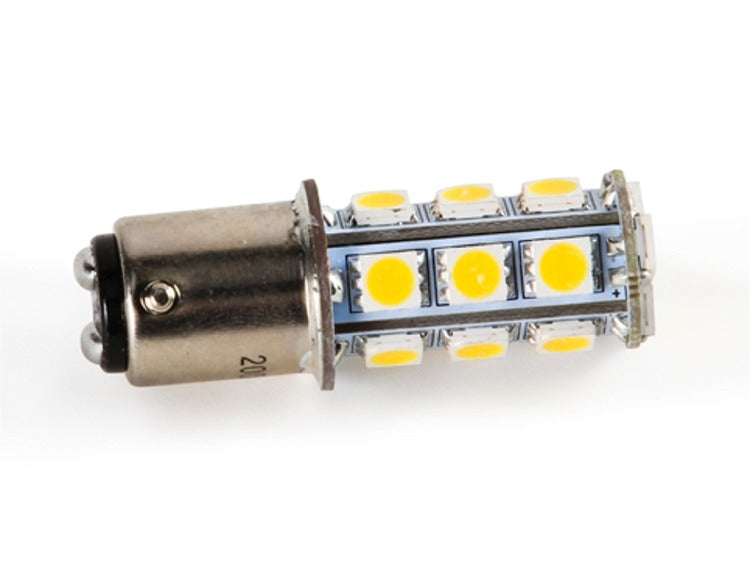Back in the "old days" with Lead-Acid batteries, it was pretty easy to calculate the state of charge by the resting voltage.
But, because of the flat discharge curve of LiFePO4 batteries you can't go by the resting voltage to get the state of charge other than knowing if the voltage is 13.3V or higher the battery is full or close to it and if the voltage is 12.5V the battery is fully discharged or real close to it, which I will demonstrate in a minute.
This is good because it means with a LiFePO4 battery you get to use almost all of the capacity you pay for above 12V. But it also means we can no longer use the old school method of knowing the battery's state of charge. Lithium Iron Phosphate batteries not only have a flat discharge curve, they also have great resting voltage recovery. They can be almost fully discharged and still have a resting voltage of close to 13V.
So how can you know the state of charge of a LiFePO4 battery?
The only accurate way is with an AH meter. An amp hour meter measures the amount of amp hours used. So if you have a 100AH battery and the meter shows you have 70 amp hours left it's a no brainer, you know your battery is seventy percent charged. Knowing how many amp hours or watt hours are left is better than just seeing a percentage. This is one of the areas the bluetooth feature reBel batteries have really shines because their bluetooth batteries have an amp hour meter. By knowing how many amp hours are left you will know how charged your battery is. The reBel batteries also show state of charge but it's not going by the voltage. It's getting its measurement from knowing how many amp hours have been used and how many are left.
So, why can't you just go by the resting voltage if you know a certain voltage is reached at a certain percentage of charge?
Because there isn't enough difference to get an accurate measurement. unlike Led-Acid batteries when a LiFePO4 battery is fully discharged while the capacity doesn't recover to any real usable amount the resting voltage does recover enough to appear the battery still has some capacity left when a high current load is removed near the end of its cycle and will still recover some voltage when a light load is removed near the end of its cycle. Here's a test I did using the reBel 6AH LiFePO4 battery to prove this.
I used a 6.5 amp load and reached 12.0V in 45 minutes on the nose. Because this was pushing that battery to its limit the voltage settled to 12.34V and stayed close to that voltage for most of the cycle. I continued discharging down to 11.5V because most people using an inverter or lights will go that far. At that point the voltage was dropping fast and the battery was discharged. I removed the load and in a couple minutes the voltage recovered to 12.55V. In the old days this would indicate the battery still had most of its capacity left. If this had been a Led-Acid battery being just a little below fifty percent discharged the resting voltage would have been 12.2V.
When I applied the load again I was below 11.4V in thirty seconds. With a Led-Acid battery a resting voltage of 12.55V would mean the battery still has a lot of capacity left. But when the resting voltage is that low on a LiFePO4 battery It's extremely low and has no real usable capacity left. Remember we're talking about the resting voltage which is the voltage when the battery has no load on it not when it's under a load. In this test because the current maxed the C-rating of the battery the voltage under load was lower than this resting voltage even when the battery was full.
So, how about if you only use half of the batteries capacity?
You still can't go by the resting voltage. To illustrate this I ran the same test again. After charging the battery and letting it settle for a few hours the voltage was 13.37V. I ran the test for thirty minutes which discharged the battery a little below fifty percent.
The voltage was 12.28V. After removing the load the voltage recovered to a resting voltage of 13.12V. I went another fifteen minutes taking the battery to 12.0V and removed the load. This time the voltage recovered to 12.92V. As you can see the voltage recovery between a little over half discharged and almost dead is only two 10ths of a volt. Because you get the same amount of amp hours from a LiFePO4 battery whether you draw one amp or its full C-rating going by how many amp hours or watt hours you have left is an extremely accurate method to use to see the remaining capacity.
Is the voltage recovery the same under light loads?
No. Under a real light load you are thoroughly depleting the battery. The voltage will still recover but not nearly as much as it will when a heavy load is removed. That being said, it will still recover enough to indicate the battery has some capacity left.
The reBel Batteries Lithium Iron Phosphate batteries are slightly de-rated so you will always be sure of getting the amp hours you pay for and a couple extra.



